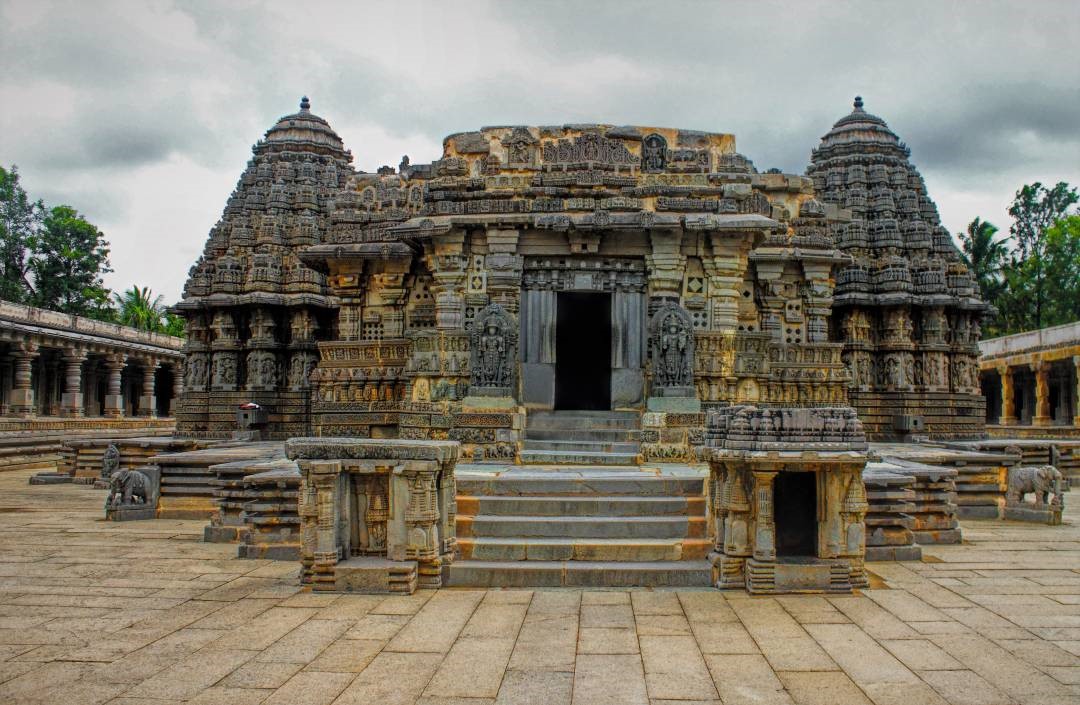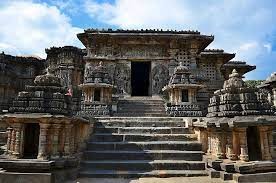Nuakhai Juhar Festival
Prime Minister greeted the people on the auspicious occasion of Nuakhai.
- About – Nuakhai is an agrarian festival.
- The word ‘Nua’ means new and ‘Khai’ means food.
- Origin – It originated during the Vedic period where the sages or Rishis used to talk about Panchyajna.
- One among them was Pralambana yajna, which means the cutting of new crops and offering them to mother goddess.
- Regions – The festival is mostly celebrated by the people of Western Odisha and Southern Chhattisgarh.
- It is known as Navakhai Parv in Chhattisgarh.
- Observed on – It is observed in the month of Bhadrapada or Bhadraba (August–September), the day after the Ganesh Chaturthi festival.
- In Odisha, on the occasion, the new rice is offered as Bhog to Goddess Laxmi.
Some other festivals in India that celebrate the harvest include Onam, Makar Sankranti, Baisakhi, Lohri, Ladakh Harvest festival, Pongal, Ugadi, Bihu among several others.
- Nuakhai celebration starts with the preparation for the festival almost two weeks before the festival.
- Nuakhai is understood to have nine colours and as a consequence nine sets of rituals are followed as a prelude to the actual day of celebration.
- In a sequential manner these 9 colors include:
|
Colors
|
Events
|
|
Beheren
|
Announcement of a meeting to set the date
|
|
Lagna dekha
|
Setting the exact date for partaking of new rice
|
|
Daka haka
|
Invitation
|
|
Sapha sutura and lipa-puchha
|
Cleanliness
|
|
Kina bika
|
Purchasing
|
|
Nua dhan khuja
|
Looking for the new crop
|
|
Bali paka
|
Final resolve for Nuakhai by taking Prasad (the offering) to the deity
|
|
Nuakhai
|
Eating the new crop as Prasad after offering it to the deity, followed by dancing and singing
|
|
Juhar bhet
|
Respect to elders & gift transfers
|
References
- PIB | Prime Minister greets people on Nuakhai
- The Times of India | Nuakhai The harvesting festival of Odisha
National Medical Commission (NMC)
National Medical Commission achieved prestigious WFME Recognition Status for 10 Years.
NMC
- It is India's premier regulatory body overseeing medical education and practice.
- It has been constituted by an act of Parliament known as National Medical Commission Act, 2019.
- Aim of the National Medical Commission
- Improve access to quality and affordable medical education.
- Ensure availability of adequate and high quality medical professionals in all parts of the country.
- Promote equitable and universal healthcare.
- Objectively assess medical institutions periodically.
- Have an effective grievance redressal mechanism.
Recent events
- Status - The National Medical Commission (NMC), India achieves the status of World Federation for Medical Education (WFME) Recognition for a tenure of 10 years.
- This is a testament to NMC’s commitment to the highest standards in medical education and accreditation.
- Recognized Entities - As part of this recognition, all the existing medical colleges and the new medical colleges in India will become WFME accredited.
- Significance - The recognition will further enhance the quality and standards of medical education in India by aligning them with the global best practices and benchmarks.
- Eligibility - It enables Indian medical graduates to pursue postgraduate training and practice in other countries that require WFME recognition.
- With NMC being WFME accredited all the Indian students become eligible to apply for Education Commission on Foreign Medical Education and United States Medical Licensing Examination.
World Federation for Medical Education (WFME)
- It is a global organization dedicated to enhancing the quality of medical education worldwide.
- WFME's accreditation program plays a pivotal role in ensuring that medical institutes meet and uphold the highest international standards of education and training.
References
- PIB | National Medical Commission
- NMC | Introduction
Sacred ensembles of Hoysalas
The sacred ensembles of the Hoysalas, which includes three temples in Karnataka, has been inscribed on the UNESCO’s World Heritage List.
Hoysala Temples
- History – Hoysala style temple complexes in southern India, dating from the 12th to 13th centuries are dedicated to Shiva and Vishnu.
- Architecture – The shrines are characterized by sculptures, stone carvings, a circumambulatory platform, a large-scale sculptural gallery, a multi-tiered frieze, and sculptures of the Sala legend.
The Chennakeshava temple
- It is located in Belur (Hassan district), Karnataka.
- It was constructed by King Vishnuvardhana of the Hoysala dynasty in the 12th century to commemorate his victory over the Cholas.
- The Hoysalas used soft soapstone for their structures, as they were found suitable for intricate carvings.
- Enclosed by a Prakara with a Gopurabuilt in the Vijayanagar style, the temple stands on a platform or Jagati.

The Hoysaleswara Temple
- It is situated on the banks of Dwarasamudra tank in Halebidu (Hassan district), Karnataka.
- The main Hoysaleswara temple was built in the 12th century during the reign of King Vishnuvardhana and is dedicated to Lord Shiva.
- The second Kedareshwara Temple displays remarkable Hoysala architecture and stone carvings.
- The Hoysaleswara Temple poised on a star-shaped base on the lawn is an architectural marvel.
- This twin-shrine temple is perhaps the largest Shiva temple built by the Hoysalas.

The Keshava Temple
- It is located in Somanathapura village (Mysore district), Karnataka.
- It was constructed by a commander of the Hoysala Army, Somanatha.
- The Keshava temple is built on a raised platform with an outer Pradakshina pathway.
- The temple has a stellar plan with three shrines and Vimanas.
References
- The Indian Express | Sacred ensembles of Hoysalas
- Deccan Herald | The sacred ensembles of the Hoysalas
Breakthrough Prize
The 2023 winners of the Breakthrough Prizes were announced recently.
Breakthrough Prizes
- The Breakthrough Prize is renowned as the Oscars of Science.
- About - It recognizes the world’s top scientists working in the fundamental sciences.
- Created by - Group of Silicon Valley entrepreneurs in 2010.
- Founders - Sergey Brin, Priscilla Chan and Mark Zuckerberg, Yuri and Julia Milner, and Anne Wojcicki.
- Prize money - Each prize is $3 million and presented in the fields of Life Sciences, Fundamental Physics and Mathematics.
- In addition, the New Horizons in Physics and Mathematics Prizes and the Maryam Mirzakhani New Frontiers Prize are awarded to early-career researchers.
2023 Prizes
- 3 prizes were awarded this year in the life sciences category, 1 for mathematics and 1 for physics, 1 for life sciences.
- Prize in Mathematics - Awarded to Daniel Spielman of Yale for multiple discoveries in theoretical computer science and mathematics.
Theoretical computer science (TCS) is a subset of general computer science and mathematics that focuses on mathematical aspects of computer science.
- Prize in Fundamental physics - Shared by Charles Bennett, Gilles Brassard, David Deutsch and Peter Shor for their work in quantum information.
Quantum information is problem solving and data processing using a quantum system as the information carrier, rather than binary ‘1’s and ‘0’s used in conventional computation.
- Life sciences prize - Clifford Brangwynne and Anthony Hyman for discovering a new mechanism of cellular organization.
Cellular Organization refers to the components of the cell and their arrangement inside it.
- The other life sciences prizes - Awarded to Demis Hassabis and John Jumper for developing AlphaFold, which predicts the structure of proteins.
AlphaFold is an artificial intelligence program which performs predictions of protein structure.
- Emmanuel Mignot and Masashi Yanagisawa for discovering the causes of narcolepsy.
Narcolepsy is a chronic neurological disorder that affects the brain's ability to control sleep-wake cycles.
References
- The Hindu | Breakthrough Prize
- Breakthrough Prize | About
Stitched Ship
The Ministry of Culture has joined hands with the Indian Navy and Goa-based Hodi Innovations to reconstruct an ancient stitched ship.
Stitched ships
- They are ships that sailed the oceans on India’s ancient maritime trade routes around 2,000 years ago.
- These ships are constructed by stitching wooden planks together rather than using nails.
- This offers flexibility and durability, making them less susceptible to damage from shoals and sandbars.
The Project
- The project entails collaboration across several ministries and departments.
- Funded by – 100% by the Ministry of Culture.
- The ministries of Shipping and External Affairs will be supporting the project in its execution stage.
- Approved by – The National Implementation Committee.
National Implementation Committee is an inter-agency committee responsible for the coordination of Project implementation activities at the national level.
- Significance - Once the ship is ready, the voyage will be sent to Bali in Indonesia, in November 2025.
- This initiative is in synergy with the Ministry of Culture’s Project Mausam.
Project Mausam aims to reconnect and re-establish communications between countries of the Indian Ocean world, to create an understanding of cultural values and concerns.
References
- The Indian Express | Stitched Ship
- PIB | keel laying ceremony of the ancient stitched ship
- India Today | 'stitched ship'

